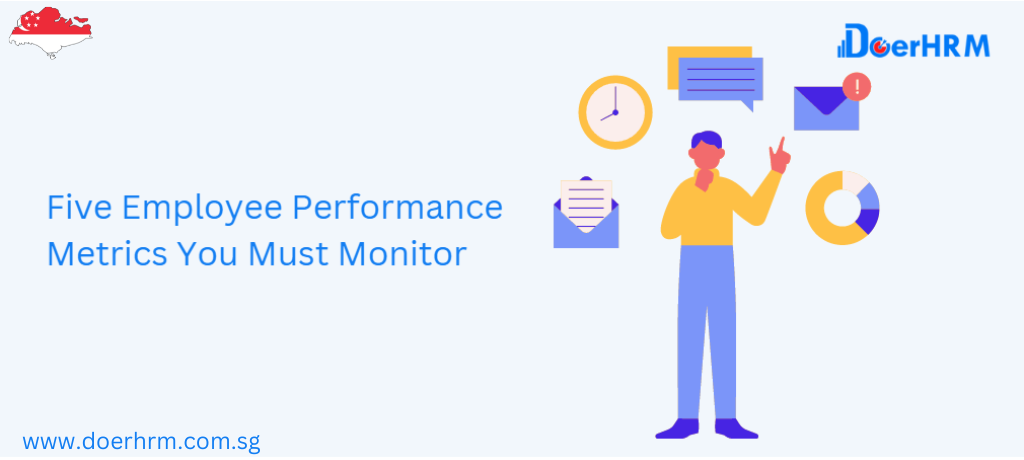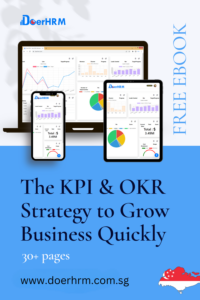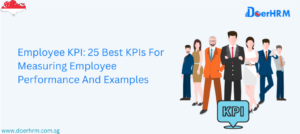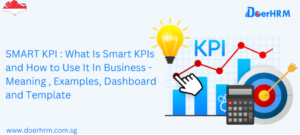Metrics employed to assess employee job performance go beyond merely determining salary increases and promotions. The right measurements are what make a business successful.
Every company with a workforce grapples with the challenge of measuring employee performance, and various human resource (HR) frameworks exist for this purpose, with the conventional annual performance review being the most prevalent.
Modern companies are focusing more and more on an unusual set of employee performance metrics because they know that when their employees do well, so does the company. After all, it’s the employees who do the day-to-day work that keeps a business running and meets customer needs.
Also, using data alone to judge how well an employee is doing is a surefire way to fail. Why? Because employees are people, they provide intangible benefits that are hard to measure, like leadership and mentoring.
Furthermore, human motivation is often rooted in personal satisfaction. Utilizing inappropriate job metrics can diminish employee motivation, directly impacting business productivity. Furnishing employees with appropriate performance metrics and conducting evaluations empowers them to make decisions that align with the best interests of the business and its clientele.
Organizations need a road map, or even better, a GPS, to get from administrative HR to strategic HR. You need to know where you want to go, which roads will get you there the fastest (and with the fewest potholes), and when to change your route if you get lost.
Google Maps utilizes data from satellites and user locations to determine the optimal route for reaching their desired destination. Similarly, employee performance metrics provide HR teams with the necessary information to ensure the alignment and success of their people strategy.
Through the collection and analysis of employee performance metrics, leaders can enhance decision-making regarding recruitment, process optimization, and the overall improvement of the work experience for employees. This data-driven approach not only enables HR leaders to secure a prominent role within the organization but also enhances their influence and impact.
Read on to learn more about how to use key HR KPIs to measure employee performance and to find out about five important employee performance metrics that are often overlooked.
What are the measures of employee performance?
Employee performance metrics are a set of measurements that can tell you how well your company is doing in five key areas:
- Workforce Recruiting and Retention
- Employee engagement
- Performance management
- Leadership and management efficiency
- Diversity, equity, inclusion, & belonging (DEIB)
There are two kinds of employee performance metrics: quantitative and qualitative. To check on the health of your organisation, you need a mix of both.
Quantitative metrics are clear numbers and percentages that are often tracked by HRIS and performance management tools, such as the average engagement score, the rate at which goals are met, and the retention rate.
Qualitative metrics are easier to interpret and include things like how employees feel like they belong, how they answer open-ended questions on performance reviews, and how candidates felt about the hiring process after they were hired.
When you look at both quantitative and qualitative employee performance metrics together, you can put your data into context and paint a more colourful picture of your people that shows how they really feel as employees.
In the past, the HR function was seen as a separate administrative island whose only job was to hire and train new employees, manage benefits and payroll, and deal with compliance issues. But strategic leaders of people know that HR can and should be a key part of a business’s success.
Tracking important KPIs for employee performance gives companies the information they need to:
- Make work more interesting for employees and build a high-performance culture.
- Give your employees the tools and training they need to do the best work they can.
- Keep track of how well managers do their jobs and help them become great leaders.
- Help employees get past problems that are getting in their way.
- Find the organization’s threats and growth opportunities
- Align HR work with the OKRs and goals of the company
- Improve the organization’s overall performance and bring in more money.
These are just a few of the many benefits that a company could get from tracking the right KPIs for employee performance. But how do you decide which ones are most important? Read on for five ways to measure the performance of your employees that can help you plan your people strategy.
5 ways to measure employee performance
There are many employee performance metrics that are important for a data-driven people strategy, but here are five that you must track on your HR KPI dashboard:
- Time to hire on average. This metric counts the number of days between when a candidate applies for a job and when they accept an offer of employment. It gives you information about how your candidates feel and how well your hiring process works.
- Employee engagement score. Surveys about employee engagement give information about how engaged employees are. You can sort these scores by things like a team, manager, and role type to see how employees in different groups are doing. Over time, you can look at how the scores go up or down to see how different projects and changes in the organisation affect the levels of engagement.
- Putting skills on display. Competencies are a set of skills, qualities, traits, and knowledge that can be measured and help an employee do their job well. One question on an employee’s performance review can show how well they show a certain competency. For example: “How well does the employee show that they have the skills needed for their job?”
- Check-in rates on time. A strong relationship between a manager and their direct reports requires that they meet regularly one-on-one. By looking at the percentage of employees who finish their check-ins, you can see how many of them do so. The higher the number, the better that manager is at putting these meetings at the top of their list and giving their employees constant support and feedback.
- Belonging. More and more companies are starting to track diversity metrics, and some are even tracking metrics related to equity and inclusion. These are all good steps toward making workplaces that are more diverse and welcoming. But belonging is a less well-known metric that we track at DoerHRM and want other organisations to look into. Belonging is a state of mind and emotion in which you feel seen, valued, and supported for being yourself. It’s a qualitative metric that can be measured with sentiment surveys and other tools that capture how employees feel at a given time.
Obtain an exhaustive list of key performance indicators for assessing employee performance.
As organizations strive to cultivate teams that are not only engaging and productive but also inclusive, it is essential for strategic human resources departments to monitor numerous indicators throughout this journey.
In this extensive guide, we delve into these aspects and more, providing practical guidance on leveraging performance management software to effectively track your metrics: The Complete Guide of Key Performance Indicators (KPIs) for Performance Management







I may need your help. I tried many ways but couldn’t solve it, but after reading your article, I think you have a way to help me.
I have read your article carefully and I agree with you very much. This has provided a great help for my thesis writing, and I will seriously improve it.
Your article helped me a lot, is there any more related content? Thanks!